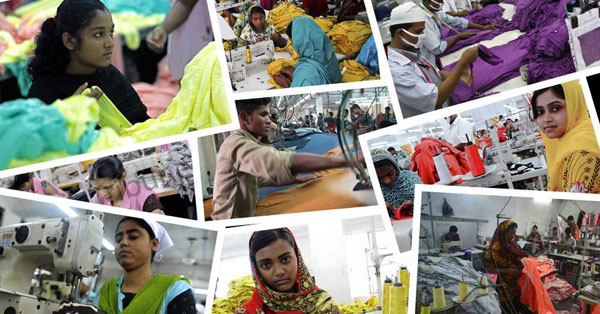Published in Dhaka Tribune on Saturday, 1 March 2014.
Only 2% RMG workers can identify fire hazards: Survey
Ibrahim Hossain Ovi
39% did not know what to do in an emergency situation

Only 2% Bangladeshi readymade garment workers can correctly identify all fire hazards, a baseline survey report has revealed recently.
The Alliance for Bangladesh Worker Safety conducted the survey on 28 factories to measure workers’ knowledge and awareness of health and safety risks, their experience with accidents and fire, and involvement in training and worker committee activities.
The survey published last week was conducted on random RMG workers and 3,308 others from 28 factories who took part in focus group discussions.
Responses from the workers revealed that only 68 of 3,207 workers or 2% could correctly identify all fire hazards and 39% did not know what to do in an emergency situation.
Wishing anonymity, a garment worker said factory owners provided training for a certain number of workers, such as two to five persons from each floor of a factory, and they demonstrated this to their buyers.
If all workers had been trained, it would have made them aware of how to face an emergency situation, the worker added.
The survey shows 66% workers were unable to correctly name the three elements needed to start a fire; 42% did not realise that oxygen was necessary to cause a fire; and 56% think carbon dioxide was an essential element to initiate a fire.
As per the survey, 45% of the participants were not trained on fire safety, and focus group discussions revealed that males were often selected instead of females for the trainings.
Most workers (87%) participated in a recent fire drill, but the drills were not always carried out correctly and were offered to night shift workers, the survey finds.
Most of the training programmes were nothing but a mere display and lacking professionalism, said Syed Sultan Uddin Ahmed, assistant executive director of Bangladesh Institute of Labour Studies.
A continuous fire drill was mostly needed to keep workers updated about fire hazards, he added.
He also suggested publication of instructions on fire safety including display of images.
Regarding building safety, 65% workers prefer to work on lower floors, as this allows them to leave the building more swiftly in case of an emergency, while 25% feel “unsafe” in their factories.
In case of an emergency, 61% workers know what they need to do is to leave the area using designated escape routes, 24% think they should find shelter in a safe place inside the building, and 17% think they should take the elevator to exit the building.
A total of 86 workers from 18% of the surveyed factories believe the security guards add to the risk of accidents through their behaviour.
Over health and safety risk issues, 98% of surveyed workers are willing to speak of health and safety risks, of which 75% prefer to voice concerns by talking to their supervisors, 48% by talking to the health and safety professional and 34% by using the suggestion box.
Surprisingly, the survey results reveal that the surveyed workers do not prefer to talk with their representatives or use external channels like third party hotlines to voice their concerns.
Traditional training system and insufficient workers’ knowledge about fire and building safety were not enough to ensure security of the workers, said Khondaker Golam Moazzem, additional research director of Centre for Policy Dialogue.
“We should come out of traditional methods and ideas and take measures based on the factories and workers’ level as well,” he added.
The Bangladesh Garment Manufacturers and Exporters Association (BGMEA) has taken an initiative to train 36,000 trainers, who will train workers, BGMEA Vice-President Shahidullah Azim told the Dhaka Tribune.
The BGMEA had already trained 15,000 trainers, he added.
The issue of fire and building safety came under spotlight following the Rana Plaza collapse in April last year which killed more than 1,100 workers, putting pressure on the manufacturers to address fire and building safety.

